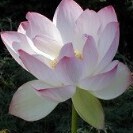Leaderboard
Popular Content
Showing content with the highest reputation on 07/26/2024 in all areas
-
I have always operated under the assumption (right or wrong) that the polisher gave me the blade in exactly the condition they meant for it to be in… and there is nothing I can do to make it better and a hell of a lot I can do to make it worse. I’ve never understood the concept that the polisher expected me to ‘finish’ his polish with uchiko? I thought that’s what I paid him to do. Kind of like going to Nobu and asking for extra dipping sauces for a piece of sushi the chef just handed to you. Nope… he gave it to you EXACTLY the way he wanted you to enjoy it.7 points
-
This is a lengthy topic..... Uchiko 'dulling' of the blade due to the micro abrasions of the powder over time might have been recommended in the 1980s and 1990s on overly brightly polished blades in heavy hadori. The feeling back then among some was that the kesho was so bright, and frankly obfuscating the true hamon, that it had better be toned down by repeated uchiko application. Indeed, people pursued a hybrid appearance between kesho and sashikomi. Again, in the Western world, firstly people did not have much access to a lot of highly qualified and skilled polishers and we were working off what we had, the understanding was inferior to today (ie shiny hadori polish was the way forward, no matter what) and went as far as believing that there was a 'Juyo polish' and 'non-Juyo polish', etc. All of that resulted in sub-standard or budget-friendly approaches (we have experienced these on this board - if people look back some 6-7 years ago they will find the threads of some promoted polishes which ended in rather pitiable outcomes) with polishes which were just not good enough. There are different budgets, different skills and different polishes suitable for different blades (dependent on their age, condition, workmanship and style). A certain mukansa might be appropriate for a certain blade due to his skill or experience, and another might be preferable for another. A sashikomi might work better for a blade but be less suitable to another. A polisher is supposed to give his best to the blade, rather than leave a user to 'improve' his polish. Such statements normally accompany kesho style polishes and serve almost as an excuse. I have not been told by a mukansa smith or Tanobe sensei to 'go and apply uchiko for 20 years and then you will see the best result'. So, this topic requires much finer understanding of polishing, different styles and methods and the effect of certain stones / uchiko on a blade.5 points
-
5 points
-
4 points
-
1. Wakizashi Mumei: Thought to be 宗弘 (Munehiro) in Fukuoka (福岡) Late Showa era 2. Katana Mumei: Thoght to be Kanemoto (兼元) in Noshu (濃州) Circa Tensho (天正, 1573-1592)4 points
-
I know I am late, but I still do not understand the paper. The paper looks an incorrect explanatory note rather than a certificate. There are several points I cannot understand. The paper says that the armor maker Myochin Muneyoshi (明珍宗吉) was invited to Shonai by Sakai Saemon no jo Tadatsugu (酒井左衛門丞忠次), and Tadatsugu was the 27th Lord of the Shonai domain. However; 1. Sakai Tadatsugu (酒井忠次) died in 1596 before the Shonai domein was established. Ref. Sakai Tadatsugu - Wikipedia 2. The first Lord of the Shonai domain is Sakai Tadakatsu (酒井忠勝), who is the grandchild of Tadatsugu. 3. The last Lord of the Shonai domain is Sakai Tadamichi (酒井忠宝) and he is 12th load. So, there is no 27th Load of the Shonai domain. 4. If Myochin Muneyoshi made the armor in late Edo period, what about the first part of the paper?4 points
-
4 points
-
The Spencer Museum of Art in the University of Kansas has a nice modest collection of tsuba - around 250 https://spencerartap...#/search/works/tsuba But I don't know who is describing the collection or how much they know about the more common schools of artists. Kinai School Description: Tsuba, radish and leaves pierce work. [ Not even close!] https://spencerartap...-search#/object/4756 https://spencerartap...-search#/object/4888 A cast copy [very common] see https://www.ebay.com.au/itm/226138221756 https://spencerartap...-search#/object/4836 Description: Tsuba, two leaves (blood stain corrosion) [clearly Kinai school design, "Blood stain corrosion" - how do they make that conclusion?] https://spencerartap...-search#/object/4818 Description: Tsuba, shibuichi nanako - kiri and passion flowers and leaves. Then they go on to say made of Iron - obviously Sanmai construction. Wrong descriptions are not restricted to just this museum of course - you need to be vigilant and keep your eyes open though.3 points
-
G'day guys, Dragons are common subjects for horimono. There are many different styles out there. They pop up on this forum from time to time and people will often comment that this example is good, this example not so good and so on. If you are doing research on them it is difficult to find many examples in one place. I have discovered that it is also very difficult to take a good photo of one. I thought it might be a good idea to dedicate a thread to them. I will start it with this example by Gassan Sadakatsu dated 1920. Cheers, Bryce3 points
-
3 points
-
That Morisuke is an amazing sword Thomas I am happy it is in good hands. It will be amazing opportunity for people to see it in San Fran show.3 points
-
So, Franco it is perfectly natural for a student to charge a different fee to a mukansa smith. That entails different economics but also different skill levels. Saito san commands the highest prices in Japan because he can rectify polishing disasters or bring swords back to life. A mere deshi might not be able to do that. Polishing time, techniques, expertise and skill deservedly are rewarded with higher fees, which might not be in accordance with everyone's budget. Even Tsurura san, once upon a time, not so long ago, would differentiate between the different 'levels of polish' - see below (not on his website any more). I hope my 'sticking' of the image below is to your satisfaction? In reference to the question below: My conclusion from the sentence below was that by making the ashi 'more vivid' you had made the polish what you and Arnold perceived to be somehow 'better'. In other words, you have implied that the initial polish did not show the activities and detail sufficiently (ie, had obfuscated or concealed them to some extent) and your subsequent application of uchiko rectified that situation, so that the latter became more vivid and visible.3 points
-
In the Birmingham museum some of the labels/descriptions had got mixed up "All the right notes but not necessarily in the right order"3 points
-
This is a misconception and an old belief. I hear it from time to time from the older generation collector but current thinking is not consistent with that approach.3 points
-
Windows 8.1 Open a photograph in Microsoft Paint. This can be done by right-clicking the image file, scrolling down to “Open with” and clicking on “Paint.” The program will automatically open and should be on the “Home” tab. If not on the “Home” tab, then click on the "Home" tab. In the "Image" section, second from the left, click on “Resize” and a popup window will appear. In the “Resize” section in the top half of the popup window, make sure there is a check-mark in the “Maintain aspect ratio.” For most cellphone and camera photographs, enter the number 25 in either the Horizontal or Vertical row. The number entered will automatically appear in the other row. [For small size photographs, use a larger number. For large size images, use a lower number.] Click on “OK.” The resized picture is now viewable in the work space of MS Paint. In the upper left corner, click on the “File” tab. From the popup window, click on “Save as” and select a file format. [Selecting “JPEG picture” will work best for most forums.] Then select a location to save the file to, give the file a name, and finally click on “Save.”2 points
-
Uchiko - yes or no is a sensitive topic that is repeated here at regular intervals Despite the general opinion that uchiko is unnecessary, or even undesirable, I encounter its use both in Japan and outside of Japan It is always at the discretion and responsibility of the user From what I heard from a friend who is a togi-shi, the Tokugawa Art museum in Nagoya generally refuses to re-polish their blades and the only way to maintain the blade is uchiko If anyone passes by, visit this museum - there are always some blades on display, although often not many I generally agree with the recommendation not to use uchiko, as many of us don't have access to first class uchiko, and we also don't have the skill to use it properly. However, I disagree that using uchiko will destroy the polish on the blade2 points
-
2 points
-
Did the auction house include a complimentary fingerprint scan? I'm sure the new owner would love to track down the absolute blighter that had his grubby little mitts all over the blade...!2 points
-
Sherif, there is a lot to study and learn for you. Both blades seem to be authentic Japanese swords, but we only see the NAKAGO (tangs). The blades have to be seen in full and by close inspection for any judgement. The first TSUBA is a cast copy; no collector value. The metal parts of the TSUKA (handle) look depatinated, if not cheap reproductions. The second TSUBA is corroded; not good. A defect on a blade is never interesting in a positive sense, it reduces the value. In some cases, defects can be fatal. It would be good to show your swords to an expert. Perhaps you have an NMB member near you in Texas?2 points
-
I had another look at that particular museum and found this : https://spencerartap...-search#/object/4788 Interesting Shoami design - I wonder if the Saotome school would have other ideas on the subject? https://spencerartap...-search#/object/4727 What do we think of the possibility this guard is by the Sōten School ? [highly unlikely IMHO ]2 points
-
2 points
-
That is what I thought - never seen that before, not sure I like it much as a design - looks like something went wrong [That's what happens when you mix Yoshiro with Kinai ]2 points
-
2 points
-
I will indeed be at the San Francisco show for sure and so will the sword. The NBTHK/AB are doing a presentation on Nanboku-cho Bizen and this sword will be available for hands-on examination...2 points
-
One of the really import thing to understand when considering iron and steel is what rust is and how it works…a really simplified set of rules is that there are different types of rust to consider there is stable rust type and unstable rust…your aim is prevent any rust or if you have rust make sure it’s only stable rust. Red rust..this is bad rust it’s essentially active destruction and if not managed will destroy the iron/steel item. It’s Hydrated oxide Fe2O3•H2O (high oxygen/water exposure) with another contaminant such as salt, its a sign that the environment itself is very corrosive it’s usually uniform….the classic example is an unprotected iron tool left in a garden shed. yellow rust..this is bad rust rust from iron oxides that is very soluble and is creates in high water environments…a bike left out in the rain will form this yellow rust. Iron oxide-hydroxide FeO(OH)H2O (high moisture) it will run and will have run marks. brown rust..another bad rust,this forms in low moisture high oxygen environments..Oxide Fe2O3 (high oxygen/low moisture). This is the sort of rust that a unprotected iron object will get in a family home. It tends to be spotty and will be propagated by contamination on the iron ( from a finger print etc). now we have good rust…BLACK rust…this is rust that forms in a low oxygen and low moisture environment environment, Iron (II)oxide – Fe3O4,also called magnetite. it tends to take longer to form than other rusts and can actually form as a layer under other rusts, especially brown rust…now the great thing about black rust is that it’s stable and does not propagate but more than that it forms a layer that protects against active rust types ( red, yellow and brown)…for old artefacts made of iron and steel ( swords and other weapons ) black rust can be a savour and preservative…very old European swords will often be covered in a coat of black rust and You do NOT EVER remove this black rust from these artefacts ( unless your a philistine) as it’s the patina of age and authenticity and protection all in one..Japanese swords are a bit different in that the collectors aim to have the blade in Polish and free of any rust ( to see and study the steel) but even Japanese swords preserve that black rust on the tang ( again to show the age ) the act of collecting and and appreciating Japanese swords is actually a bit of destructive process to gain access to the steel in the polished state ( no other area actively removes metal from artifacts…as a collector of old stuff it took me a while to get my head around the Japanese sword collection paradigm). So with a blade like this that you are not going to likely get polished by a professional Polisher your best bet may be to follow a more European sword collecting approach which is to stabilise and protect only ( until you can get an expert opinion on the worth of polishing). so your aim is to stop the red,yellow, brown rust and stabilise to only having black rust. The way you do this is to remove oxygen and moisture..so first oil…second oil and third oil. A good machine oil is best such as sewing machine oil ( I use singers sewing machine oil it’s cheap and easy to get hold of)…if it’s heavily red rusted I tend to actually give it thick layer of oil for a good few days…this really helps the oil penetrate the rust…carefully cleaning with good quality lint free cotton cloth and 99% ethanol …then it’s a case of thin layers of oil and clean every few days after a while you should have nothing left but black rust…then it’s just maintaining protection which is a very light ( no beading) layer of oil and leave that black rust well alone unless your sending it to a polisher….resists using acids and rust stabilisers on Japanese swords or any historic artifact for that matter.2 points
-
I offer for sale Juyo Nado Zufu books (45 books in total) The set includes: Vol.1 to Vol. 27 ( missing Vol. 8, Vol. 9, Vol. 14 part 2, Vol. 15 part 1, Vol. 16 part 2 ) Vol. 37, 45, 53 Price for all 45 books ... 1.200 EUR Plus postage SEPA or PP payment (+ PP fee or payment to a friend) Sent from Slovakia1 point
-
Hello all, examining one of my Tsuba I recognized tiny bright spots if light falls on them aslope. Those are scattered irregularly all over the surface. Sorry for the mediocre quality of my shot, but I hope You get the idea. Another picture of the same area in a steeper angel for comparison shows that these spots are no abrasions. Seeing such sprinkles on a blade I would call them „nie“, but on Tsuba, too? I haven’t seen this before. And does it tell something about the material or working process? Best, Florian1 point
-
I've been experiencing an average wait of 6 weeks for my last 6 swords out of Japan since March.1 point
-
My experiment was primarily a test to see if the blade would degrade or not In fact, I apply uchiko (if used) 2-3 times a year My attempt corresponds to the application of 30-50 years equivalent and above all it is necessary to realize that it was much more unkind to the blade Steel slowly oxidizes over time (traditional oil is slightly acidic) and by applying uchiko you remove the surface oxide After a fresh polish, steel oxidizes faster, so someone recommends applying it more often over a period of several months I haven't oiled my blades in a while, and even when I did, I first completely removed the oil before applying the uchiko I repeat - it is essential to use high-quality uchiko and not press on the blade And you're absolutely right - using uchiko on a blade with a Kesho polish slowly removes/softens the hadori I don't say - use uchiko I'm just describing my own experience And you are always welcome Michael1 point
-
Look… I understand you being a prickly character with me because of our political disagreements in another thread, but taking it out on others is in poor form.1 point
-
1 point
-
Concerning the cross-hatching areas, they are usually larger than needed for the application of the NUNOME ZOGAN decoration The exceeding area is usually burnished down later in the process with a MIGAKI-BO, if I am correctly informed. But admittedly, this TSUBA is a bit of an enigma. The cross-hatching does not show remaining traces of gold or silver, so the TSUBA may have been used only half finished. The cross-hatching is not recently done in my opinion; it looks used and the usually sharp edges are rounded. I have no good explanation for the defects on the SEPPA-DAI. Taking samples for scientific material analysis? Who knows? Perhaps Ford?1 point
-
Thank you again Moriyama San for your help. I agree with you Piers, I consider that it is an historic object and a witness of a troubled era were the sword was the main weapon.1 point
-
1 point
-
Regardless of the paperwork, it’s a great object to have, especially with the inscriptions, and the historical background is probably right.1 point
-
i suspect that it may be such a document and was written after Meiji era.1 point
-
On a slight bend of the topic, that first yoshiro mon Tsuba is the first I have seen where a mon has a (Kiri?) Stalk.1 point
-
The mei is Nanto ju Fujiwara Nobukiyo I think Muromachi, Kanabo school See ref signature on this naginata - https://sanmei.com/c...ia/T221936_Y1406.htm1 point
-
It's a known "fact" that swords reach their optimum state many years after a polish. Not sure if it's because some things tone down a bit or if time or handling plays a part, but maybe it's like furniture or steel, where patina plays a role. Either way, if in doubt, avoid uchiko. But it does have a role to play if you know how and when, and on what swords. You HAVE to use only the very good stuff, and avoid using it where there are pits or openings, as this is where it leaves "hike" which are those streaks. Too much pressure and getting it into tiny openings is seriously detrimental, and you will end up with lines that look like scratches.1 point
-
Jean, I don't like those two pins on the rim. I wish museums would use softer materials or at least restrict possible damage by using the nakago-ana. I found the same guard here https://searchcollec...8d3b0a22d131ed&idx=21 point
-
1 point
-
Actually, it is not. From personal experience, I had an Echizen Rai Kuniyasu that was polished in Japan. Over the first 6 months I followed the polisher's care instructions precisely. Which included using uchiko. Over those 6 months the detail and activity continued becoming more and more vivid. In fact, this sword was shown twice to our study group over that time. Upon which our late friend Arnold Frenzel commented aloud "where did all that ashi come from." Where indeed! Now, having said that, I was given very similar care instructions using uchiko for a sword I had polished after that. I've chosen not to follow the uchiko path on this other sword. Why? Polisher's uchiko will not scratch when used absolutely correctly. However, it will absolutely leave fine scratches if it is not used absolutely correctly. Since I do not trust myself to be using uchiko absolutely correctly over 100% of the sword, I choose not to use it. Additionally, I've watched two different polishers uchiko my swords and neither one left a scratch on either sword. In any case, old, new, times are a changing. Microdear cloth and anhydrous alcohol works just fine. Regards1 point
-
Like a stripper with a bad tattoo - I like strippers too though...1 point
-
Got it Piers, could be contemporary to the Boshin war period. Thank you very much to both of you, Piers and Uwe. Your help was decisive and help me a lot to understand and appreciate that new acquisition.1 point
-
Historically significant if the chip was indeed acquired in the Sakurada-mon Incident. If you want romanticism this has it in buckets...1 point
-
1 point
-
Hi David. What kind of lighting did you use? I see that you are using a screen, but I can't see where the lighting source is. I've always wanted to do this kind of photography rather than what I am doing in natural sunlight (we get so much of it here in Florida).1 point
-
Hi, I am gathering the most possible exhaustive list of main Japanese sellers websites who sell shinsakuto. So far I have : https://www.nipponto.co.jp/sword.htm https://e-nihontou.c.../list?category_id=21 https://www.samuraishokai.jp/index.html (No paypal) https://www.aoijapan.../inro-and-netsuke-2/ If you guys know other reliable sellers (who accept Paypal), please share. Thanks1 point
-
1 point
-
Probably useful with this bottle of Saké - - https://rakusake.com/product/detail/658 or this 21 year old Shōchū - https://www.jauce.com/auction/t1139222519 Bottoms up! 乾杯1 point
This leaderboard is set to Johannesburg/GMT+02:00





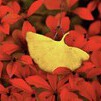


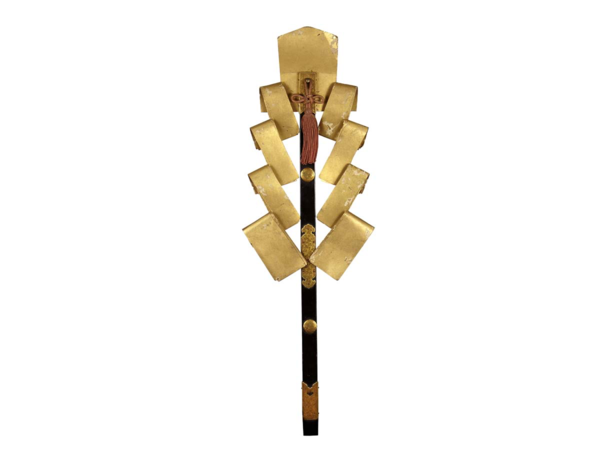






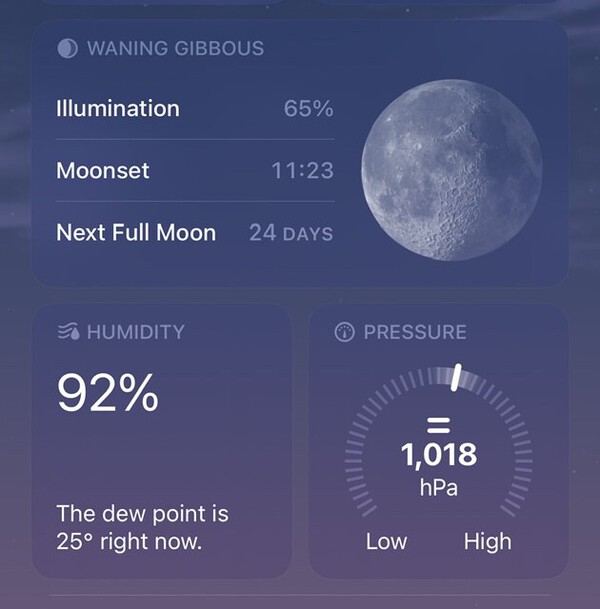







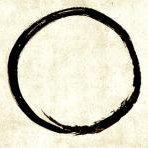


.thumb.png.4c5df79fec171b2dc4a23af38e280a4d.png)




